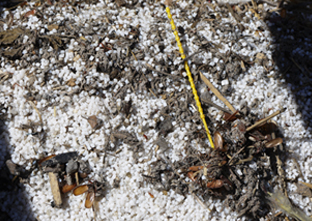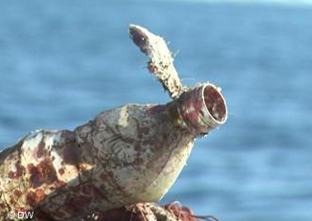The main hazards of plastic marine debris are not what you might think

Does what we commonly call the "7th continent" typify the downside of plastics ?
It is a marker of the current situation in both oceanographic and media terms. Scientifically-speaking, the concentrations of waste in the ocean gyres and their location in the Pacific, North Atlantic and Indian Ocean are well-known phenomena to do with the way marine currents work.
Floating terrestrial refuse long observed by sailors in the Sargasso Sea is also behind some of the legends associated with this convergence zone.
But while we understand the general mechanism by which these spectacular phenomena bring thousands of tonnes of plastic from the continents, we know less about their impact on the environment.

Whose fault is all this plastic waste littering the marine environment ?
 It’s the way developed societies consume, no question! Much of the plastics found the marine environment comes from industrial products marketed, consumed or used before being thrown away with their packaging. Many studies on plastic ingested by North Sea birdlife show that only a tenth comes from unprocessed products. Basically, industry is only indirectly responsible. Only consumers can “turn the tide” by changing their behaviour and demanding more sustainable industrial production.
It’s the way developed societies consume, no question! Much of the plastics found the marine environment comes from industrial products marketed, consumed or used before being thrown away with their packaging. Many studies on plastic ingested by North Sea birdlife show that only a tenth comes from unprocessed products. Basically, industry is only indirectly responsible. Only consumers can “turn the tide” by changing their behaviour and demanding more sustainable industrial production.
If they don’t, what are the risks for the sea and aquatic environments ?
 Plastics are a big threat to the ocean environment for two main reasons, which are also linked. First, because of their volume - they represent 75-80% of marine litter. But also, because of two qualities that ironically are also their advantages: being lightweight, they are easily carried by currents; and their biodegradation-resistance allows them to build up over time.
Plastics are a big threat to the ocean environment for two main reasons, which are also linked. First, because of their volume - they represent 75-80% of marine litter. But also, because of two qualities that ironically are also their advantages: being lightweight, they are easily carried by currents; and their biodegradation-resistance allows them to build up over time.
One problem for marine biodiversity is that these physical properties don’t prevent the waste breaking up over time into billions of microparticles, which then enter the food chain with the all-too-familiar consequences. In the North Sea, for example, it is estimated that each bird’s stomach contains on average 0.6 g plastic - equivalent to 60 g for a human. But, I don’t think that is the worst.
Are other species more threatened ?
The threat here is not the same. Samples taken from birds show that transfers through the food chain are relatively low given the flow of plastics available. The toxicological risks of slow chemical degradation of molecules, although hard to put a figure on, seem minor. No, what really worries scientists is more the break-up of plastic waste which hugely disrupts the balance of ocean environments and makes every fragment a vector for the development and spread of invasive species. A case in point is some algae that thrive on fragments of plastic in the Mediterranean or Halobates sericeus, the North Pacific water spider, for which plastic detritus is a perfect incubator and an efficient means of transport.






